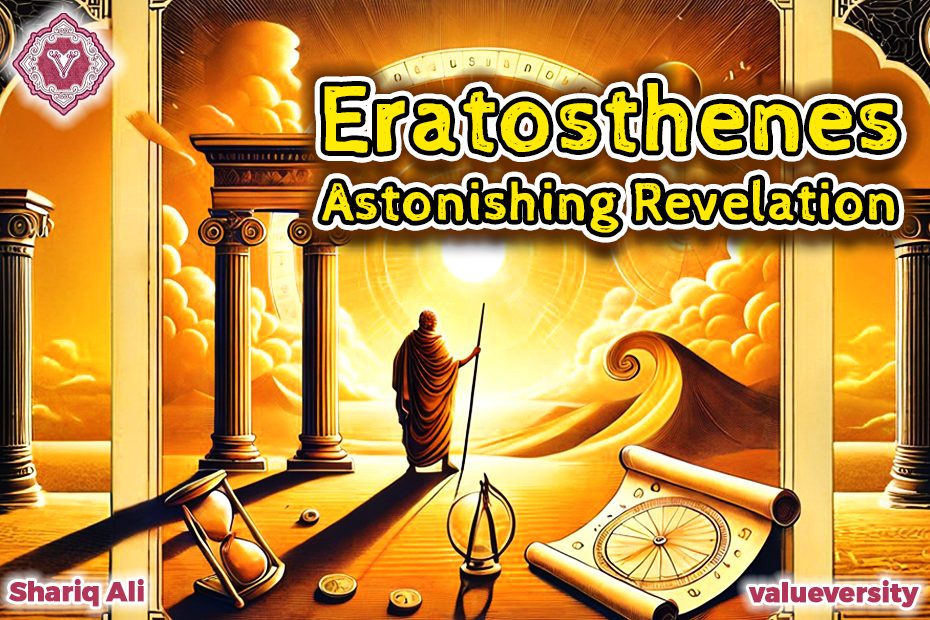Eratosthenes’ Astonishing Revelation
Shariq Ali
Valueversity
Around 240 BCE, a Greek philosopher and mathematician, Eratosthenes, achieved something revolutionary that continues to amaze the world today. He was the custodian of the renowned Library of Alexandria and was considered one of the greatest scientists of his time. Using the angles of the Sun and careful observations, he estimated the Earth’s circumference—a remarkable feat for that era.
Observation and Reasoning
On the longest day of summer (Summer Solstice), Eratosthenes observed that in the city of Syene (modern-day Aswan, Egypt), the Sun was directly overhead, casting no shadow at all. In contrast, at the same time in Alexandria, a small shadow was cast under a column.
He deduced that if the Sun’s rays were straight and parallel, then the Earth’s surface must be curved. He measured the angle of the shadow in Alexandria, which was approximately 7.2 degrees.
Mathematics and the Earth’s Circumference
Eratosthenes theorized that this difference in angle could be used to calculate the Earth’s circumference. The distance between Alexandria and Syene was estimated to be 800 kilometers. Using this data, he calculated that if 7.2 degrees represented the arc of the Earth’s curvature, the full 360 degrees would correspond to the Earth’s entire circumference.
His calculation was as follows:
800 kilometers ÷ 7.2 degrees × 360 degrees = 39,375 kilometers
This estimate was astonishingly close to the Earth’s actual circumference of 40,075 kilometers.
Scientific Significance
Eratosthenes’ experiment provided compelling evidence that the Earth is spherical. If the Earth were flat, the Sun’s rays would cast identical angles everywhere, with no variation in shadows. His work demonstrated that the Earth’s surface was curved, and his observations and calculations laid a solid foundation for scientific inquiry.
Eratosthenes’ Brilliance
This accomplishment is a testament to Eratosthenes’ intelligence, observational skills, and mathematical prowess. In an age devoid of modern tools and scientific facilities, he used logic and reasoning to determine the Earth’s circumference with remarkable accuracy.
Not only does this achievement underscore his greatness, but it also stands as a milestone in the history of science. His work continues to inspire us, showing how observation, analysis, and knowledge can unravel the answers to even the most complex questions.
